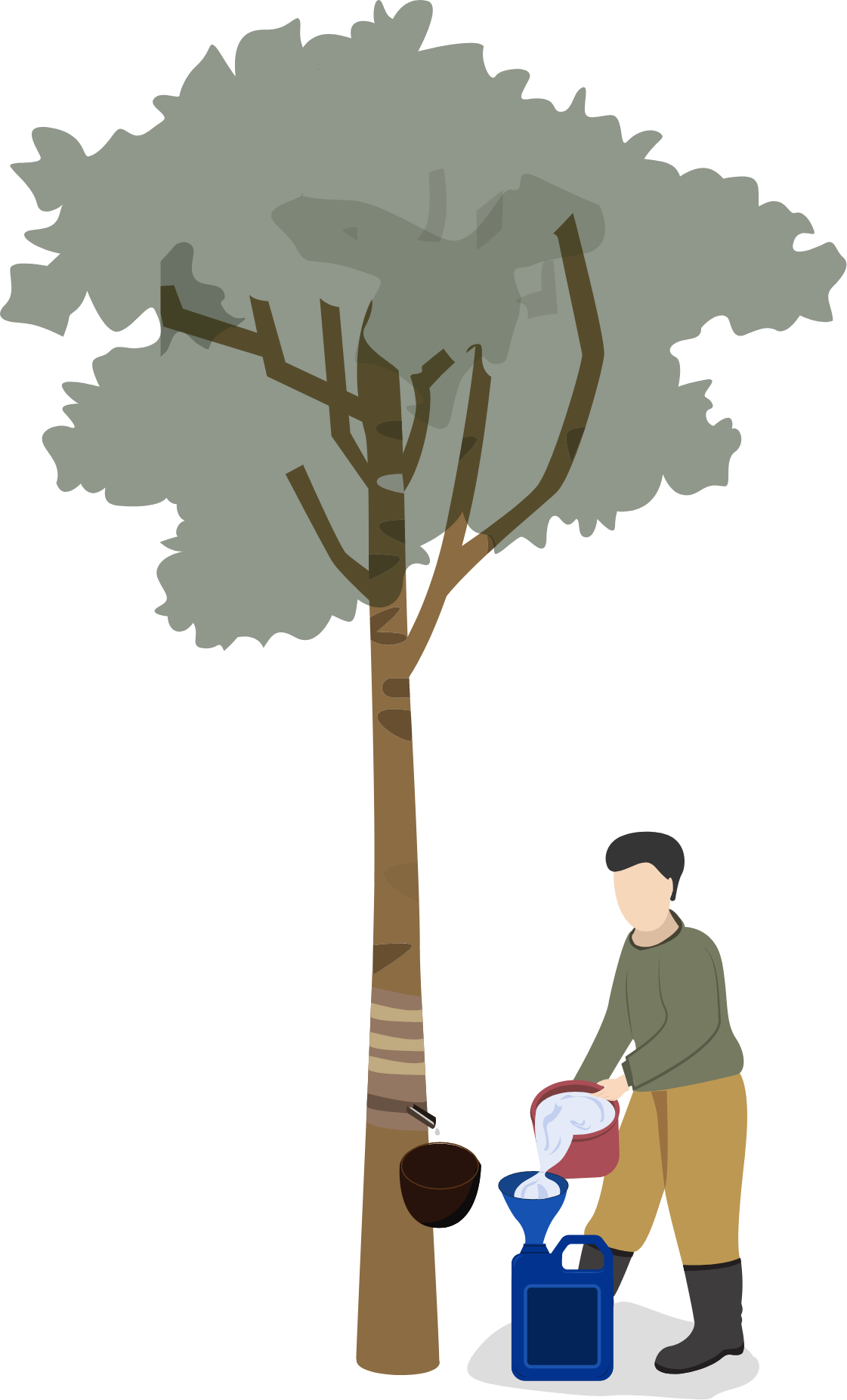Theory of Change for a Sustainable Natural Rubber Supply Chain
WHAT GPSNR DOES

Member companies publish policies adhering to human rights, environmental protection, adopt grievance mechanism,follow reporting requirements and implementation guidance

Knowledge sharing among all stakeholders, engagement between producers and policy makers, raised awareness of natural systems

Smallholders organisation is encouraged, supported and their participation is expanded to foster diversity and representation, leading to active participation in decision making

Smallholder needs are assessed to identify capacity gaps, projects on livelihoods and productivity are supported; environmental and social labour training is embedded

Traceability and risk assessment solutions are evaluated, benchmarks are defined; resources that fill gaps are developed

Development of mechanisms and frameworks to gather and develop resources, knowledge and capacity throughout the supply chain



THEMATIC AREAS

Alignment to Policy
Framework

Capacity Building

Engaging Regulators

Enhancing Supply
Chain Transparency

Including Smallholders

Shared Responsibilty



OUTCOMES

Land and labour rights are upheld, local community development

Clear differentiation between sustainable and unsustainable natural rubber

Commitments from governments towards good agricultural practices & agencies have high capacity of land-use planning

Smallholders from diverse backgrounds contribute to GPSNR decision making
process and are self organised

Increased farmer organisation, environmental and social practices improve along with smallholder livelihoods

Farmer capacity is developed, incomes are diversified through the implementation of agroforestry and Good Agricultural Practices

All actors are empowered to deploy the right tools for supply chain data Supply chains are mapped, risks are mitigated

Scalable tools and solutions are developed

Local communities have formal redressal mechanisms to ensure checks and balances


IMPACT

ILO conventions, customary land rights, human rights, anti-corruption upheld

Farmer livelihoods improve with access to clean water, sanitation, education healthcare

Healthy functioning natural ecosystems are maintained

Equity in the value chain is maintained with stable wages, small and medium holders rights, gender equity

Rubber based households have improved and resilient livelihoods

DESIRED STATE


Community Rights
• Long-term tenure and use rights to land and forest resources
• Customary land rights and titles are upheld
• No land grabbing
• Free Prior Informed Consent (FPIC) is upheld
• Indigenous peoples and local community rights upheld
• Fairness is treatment of women and men
• Resilient communities
• Informed choice to produce rubber
• Rubber holder’s rights are upheld

Workers in large, medium and small holdings
• International Labour Organization (ILO) Conventions are upheld
• Schools and education are available
• Healthcare is available
• Access to sufficient, safe and nutritious food
• Access to safe drinking water, sanitation and clean air

Institutions and Infrastructure
• Strong legislation
• Enforcement of laws and regulations
• Communities able to seek remedy for grievances
• Access to justice system
• Inclusive process of Land Use Planning
• Green infrastructure


Healthy Functioning Ecosystems & Resilient Agro-ecosystems
• Respect all natural areas and maintain all protected areas
• Respect of landscape connectivity
• Protection and maintenance of wildlife biodiversity
• Ecosystems (including cultivated areas) are dynamic and adaptive
• Integrated land use planning
• Maintenance and enhancement of ecosystems services:

Environmentally Sustainable Supply Chain
• Sustainable plantation management
• Responsible rubber processing
• No use of fire related to land clearing
• Traceable and transparent


Value Chain Equity
• Equitable distribution of value
• True cost of rubber covered
• Living Wages

Rubber- Based Households
• Improved and resilient livelihoods
• Access to financing
• Secure and stable incomes



